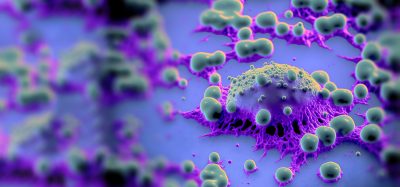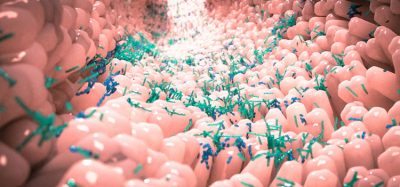Novel protein coordinates melanin production
Posted: 10 January 2023 | Izzy Wood (Drug Target Review) | No comments yet
Japanese researchers reported that a key transcription factor “Nrf3” regulates the process of melanin production in mouse and human cells.

Researchers from the Laboratory for Genetic Code, the Faculty of Life and Medical Sciences and Graduate School of Life and Medical Sciences, Doshisha University, Japan, discovered the NF-E2-related factor 3 (Nrf3)-mediated mechanism of melanogenesis.
Melanin, a natural pigment produced by specialised skin cells called melanocytes, shields our body from the detrimental effects of ultraviolet (UV) radiation. UV radiation is responsible for DNA damage, genetic mutations, and can also lead to the onset of skin cancer.
Nrf3, a known transcription factor, or protein involved in the process of converting DNA into RNA, is abundantly found in the basal layer of the epidermis. However, its precise role in melanin production remains largely elusive.
Using in vitro experimentation, the research team, published in Cell Reports, showed that Nrf3 coordinates melanin production by regulating two key processes: micropinocytosis-engulfment and uptake of large amounts of fluids and membranes, and autophagy- recycling of old, damaged, abnormal cell components through controlled cellular breakdown.
Thus, the team generated mouse malignant melanocyte (melanoma) B16F10 cells overexpressing Nrf3 or depleted the gene in normal human melanocyte (NHEM) cells and conducted a series of well-controlled experiments.
Moreover, they revealed that Nrf3 also induced the gene expression of Cln3, an autophagosome-related factor, for macropinocytic uptake of melanin precursors. They identified two autophagy-related genes targeted by Nrf3: Ulk2 and Gabarapl2, which contribute to the uptake of melanin precursors and the formation of melanosomes-specialised organelles responsible for the synthesis, storage, and transport of melanin.
The researchers also found that Nrf3 triggers the recycling of skin tissues by facilitating the autolysosomal degradation of melanosomes. Furthermore, the team showed that αMSH—a hormone that stimulates melanocytes—causes Nrf3 activation and the subsequent formation of melanin, whereas nelfinavir, an HIV-1 protease inhibitor, inhibits Nrf3-mediated melanin formation.
Dr Tsuyoshi Waku, Associate Professor at Doshisha University, added: “These findings demonstrated the physiological role of Nrf3 in the melanogenesis cascade, via the regulation of cellular membrane dynamics and the core melanogenic gene circuit, as well as the therapeutic potential of nelfinavir in skin hyperpigmentation conditions.”
Professor Akira Kobayashi, the principal investigator of the Laboratory for Genetic Code at Doshisha University, concluded, “Our fundamental research purpose is to clarify the tumorigenic effect of Nrf3. This study implies the possibility of the pathophysiological correlation between Nrf3-mediated melanin production and melanoma malignancy.”
Related topics
DNA, Drug Development, Genomics, In Vitro, Protein, Protein Expression, RNAs, Targets
Related conditions
Melanoma
Related organisations
Faculty of Life and Medical Sciences and Graduate School of Life and Medical Sciences at Doshisha University, Laboratory for Genetic Code at Doshisha University
Related people
Dr Tsuyoshi Waku, Professor Akira Kobayashi







